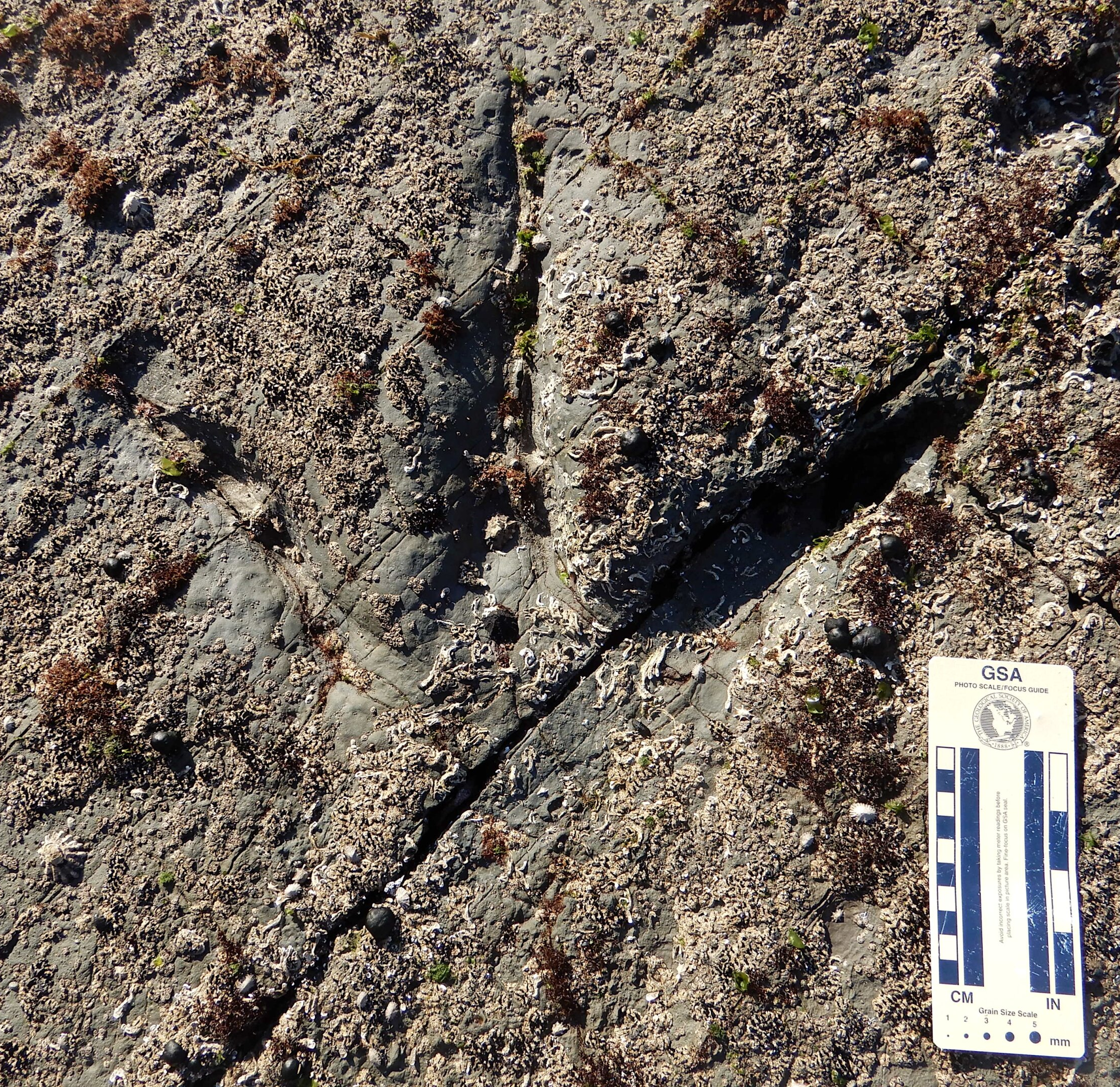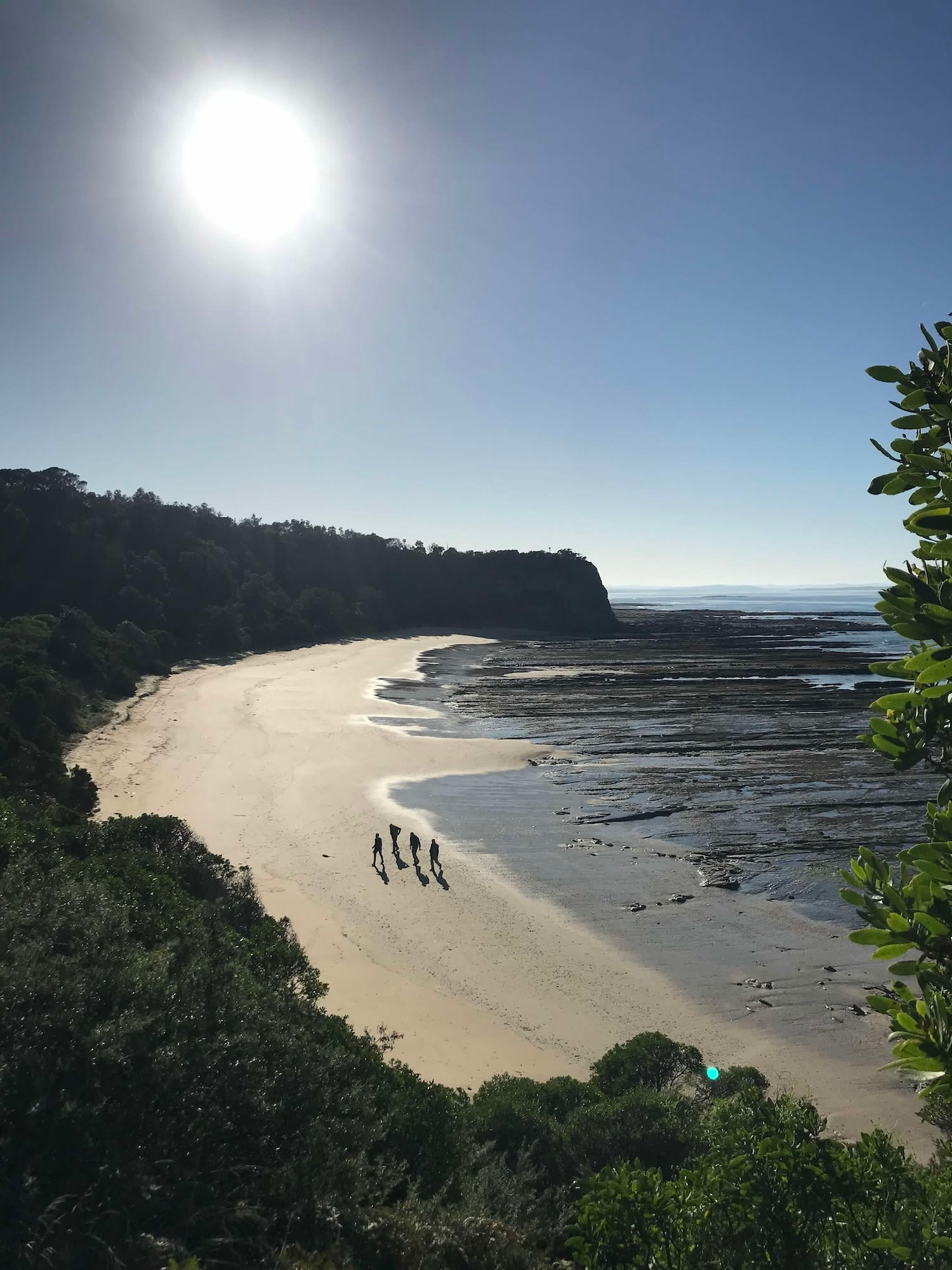Footprints made by large theropod dinosaurs have been found on Australia’s south coast, from a time when the region was still connected to Antarctica. The prints prove that big dinosaurs lived there when it almost touched the Antarctic Circle, putting the area in near-total darkness for months at a time.
The Wonthaggi Formation southeast of Melbourne has been a rich source of 120–128-million-year-old fossils. It helped reveal to the world the presence of several small herbivorous dinosaur species, as well as some of the ancestral mammals whose descendants inherited the Earth after the asteroid impact, and the southernmost evidence for Cretaceous birds.
The fact that Australia was so much further south at the time meant that these creatures lived in an environment with few counterparts in the fossil record. On the one hand, the winter nights were as long as they are today on the shores of Antarctica. On the other, the climate was a great deal warmer, both because the whole planet was hotter, and because the lack of an Antarctic Circumpolar Current meant warm waters from the equator could reach there more easily. Given the immense difficulties of accessing fossils frozen under glaciers, the Wonthaggi Formation provides our best insight into this unusual ecosystem.
Although some theropod bones have been found in the area, they’re sparse compared to the herbivorous ornithopods that presumably dominated their prey. However, when it comes to the footprints that have now been identified, the opposite is the case.
Eighteen theropod footprints have been found compared to just four from ornithopods and two unidentified. Moreover, while theropods ranged dramatically in size, 15 of these prints were made by hefty beasts, the sort people want to star in their films. Perhaps it’s easier to leave your mark on the world, and in the mud, if you weigh more than a tonne.

You have to know what you are looking for to spot a theropod print among all the modern encrustations. This one is 35 cm (14 inches) long.
Image credit: Anthony Martin
“These numerous tracks are the best evidence yet that these former polar environments supported large carnivores,” said Professor Anthony Martin of Emory University in a statement. “The large theropods would likely have fed on prey such as smaller dinosaurs, fish and turtles.”
The largest track is 47 centimeters long (18.5 inches), making it the largest theropod footprint from the era in southern Australia. Based on the relationship between the size of the feet and the length of the legs of other theropods Martin concludes, “The hip height of that theropod would have been about the same as the full height of a tall, modern-day human – or a bit more than six feet tall.” That is about half the hip height of Sue, the famous T. rex skeleton.
The question of how dinosaurs survived the polar winters has fascinated palaeontologists since two of Martin’s co-authors, Dr Thomas Rich and Professor Pat Vickers-Rich, revealed their presence in the 1970s. Whether they hibernated, migrated north or made do with what little food was available has been an ongoing question.
The footprints can’t answer that, but they do show that, at least at times, medium-sized prey was so abundant that large meat-eaters could make their home in the area. On the other hand, the absence of large herbivores, and shortage of smaller carnivores, is intriguing.
“Our find of so many theropod tracks, however, confirms that a variety of dinosaurs actually lived and walked on the ground where their bones were found,” Martin said. “Dinosaur tracks are actually much more common at the site than we previously realized.”

There are worse places to do fieldwork than Victoria’s dinosaur coast, but those tides do make things difficult.
Image credit: Anthony Martin
Martin published the discovery of three Wonthaggi formation theropod prints in 2007, but we only know there were six times as many because of the pandemic. Co-author Melissa Lowery of Monash University was close enough to the site to be able to go prospecting during Victoria’s lockdowns, some of the longest in the world. There’s little risk of catching a virus from something dead so long, and Lowery, known for her persistence, put the time to good use. “While many of us were home watching reruns of Jurassic Park, she was out finding dinosaur tracks,” Martin said.
Like many of the bones discovered in the area, the tracks lie in the tidal zone and are submerged twice a day, explaining why it took so long from the original discoveries to find the rest. Once identified, casts needed to be taken and 3D reconstructions made.
The muddy conditions suited to preserving the tracks probably arose in early summer when the landscape was thawing, and meltwater flooded the area, but the biggest question remains: “Were the dinosaurs living in this environment during the winter? We don’t know,” Martin said. “It would have been frozen over and dinosaurs walking on ice don’t leave tracks.”
Nevertheless, the apparent presence of juveniles may indicate nesting in the area.
The study is published in Alcheringa: An Australasian Journal of Palaeontology.
Source Link: Footprints Reveal Big Theropod Dinosaurs Lived Close To The Antarctic Circle